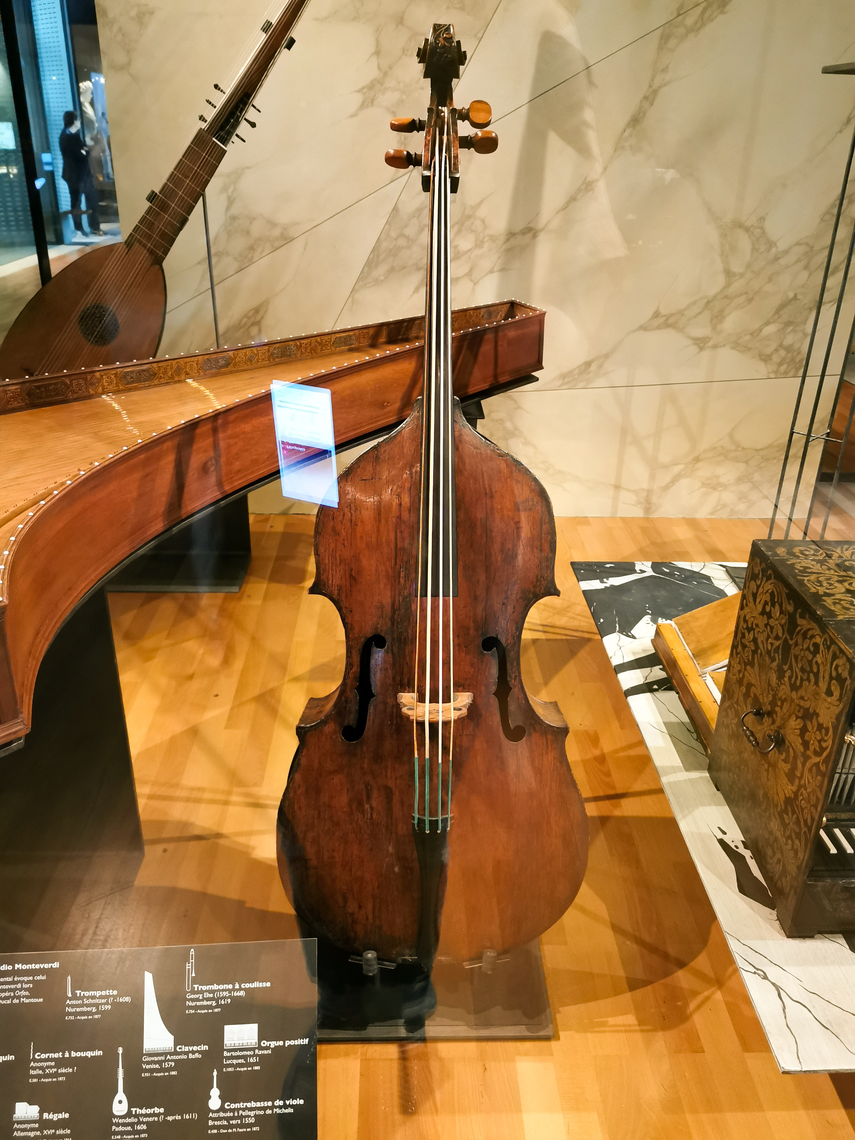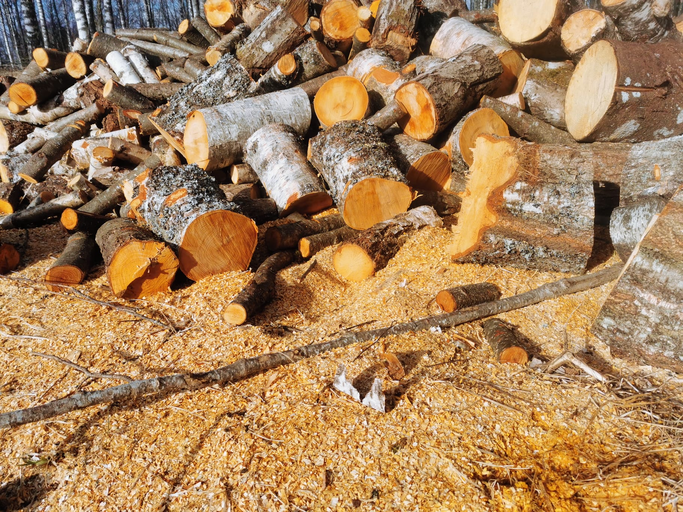My Sound
Here is where my story begins. I grew up with one foot in jazz music and the other in the classical world. But I never felt completely at home in any of them. My mind was too anarchist to consider sitting in an orchestra and I easily got bored at the jazz gigs. It was only when I discovered Evan Parker38 and the European impro music39 that I found my home. It was as if I found a bridge between classical music and jazz, where I could combine my classical technique with my ear training from jazz. And in the midst of all this, I felt a need to find and develop a sound. My sound! I wondered if it was possible to take the warm orchestral bass sound out of the orchestra and into my new context of improvised music. If it would penetrate the soundscape and survive? And I wondered how I could combine that traditional double bass sound with all the new things that I discovered by experimenting with my instrument. How to find a balance between the sounds that people generally associate with a double bass and the sounds that I have found through curiosity.
1: Elgar, R (1960) Introduction to the double bass. Raymond Elgar, p. 14
2: Brun, P. (2000) A New History of the Double Bass.
3: Born 1763 in Venice, Italy – died in 1846 in London, England
4: Born in 1821 in Crema, Italy – died in 1889 in Parma, Italy
5: Born in 1874 in Vyshny Volochyok, Russia – died in 1951 in Boston, USA
6: Born in 1739 in Vienna, Austria – died in 1700 in Deštná, Czech Republic
7: Born in 1941 in Los Angeles, USA
8: Born in 1933 in Norwich, Connecticut, USA
9: Turetzky, B. (2014) A Different View, A Memoir: The Story of the Father of Modern Bass-Playing. BT&NC Publishing
10: Turetzky, B. (1974) The contemporary contrabass. University of California press
11: Born in December 1956 in Tours, France
12: Robert, P. (1995) Les modes de jeu de la contrebasse. Musica Guild
13: Born in 1972 in Oslo, Norway
14: Thelin, H (2011) Multiphonics on the Double Bass. Norwegian Academy of Music
15: Born in 1952 in Los Angeles, USA
16: Zorn, J (2000) Arcana, Musicians on Music. Hips Road 2000
17: Dresser, M (2006, Unveil. Clean Feed – CF043CD
18: Discover, Develop, Integrate: Bass Techniques Unveiled | Mark Dresser
19: Born in 1951 in Aix-en-Provence, France
20: Born in 1912 in Los Angeles, USA – died in 1992 in New York, USA
21: Born in 1956 in Macerata, Italy – died in 2012 in Cuernavaca, Mexico
22: Cage, J (1977–1990) Freeman Etudes
23: Born in 1969 in Adria, Italy
24: https://www.discogs.com/artist/2642175-Ludus-Gravis
25: Born in 1966 in Wilhelmshaven, Germany
26: https://www.johneckhardt.de/
27: https://florentinginot.com/en
28: Born in 1934 in Los Angeles, USA
29: Born in 1952, New York, USA
30: Born in 1947 in London, UK
31: Lohse, J (2021) The Double Bass Book: 400 Years of low notes. p.141
32: Born in 1914 in Englewood, New Jersey, USA – died in 1987 in Binghamton, New York, USA
33: Born in 1936 in Newark, New Jersey, USA – died in 1961 in Geneva, New York, USA
34: Born in December 1959 in Brooklyn, New York, USA
35: Born in 1946 in Osted, Denmark – died in 2005 in Copenhagen, Denmark
36: Jarret, K (1975), Death and the flower. ABC-IMPULSE ASD9301
37: Born in 1937 in Shenandoah, Iowa, USA – died in 2014 in Los Angeles, USA
38: Born in 1944 in Bristol, UK
39: A good start if you want to learn more about this genre is to read the chapters about free improvisation in Improvisation, its Nature and Practice in Music by Bailey, D.
40: Ginot, F (2022) Florentin Ginot – Interview and Performance
The Transformation from Orchestral to a Solo Instrument
From the beginning of the 16th century, the double bass was known and in use under the names of “Grand Viole bass”, “Contrabasso de Gamba”, and “Violine”1. Unlike the violin, the double bass was not created to become a solo instrument: its original role was to double the bass with the cello, hence the name double bass2. Due to this fact, there is still a very limited solo repertoire for the instrument. The most famous and most played solo pieces were written by double bass virtuosos, such as Domenico Dragonetti3. Giovanni Bottesini4, Serge Koussevitsky5 and the composer Carl Ditters von Dittersdorf6.
With the double bass pioneer and virtuoso Garry Karr7 leading the way, new ground was broken in the 1960s, when he and others began to transcribe a long series of concerts written for other instruments to the double bass. Parallelly with Karr, Bertrand Turetsky8 began to say yes to all composers who wanted to write solo pieces for him, which resulted in about 300 compositions for solo double bass9. He was also the first double bass player to write a book about contemporary techniques for the double bass10. Since then, we have had the fortune to see the occasional piece of literature and research in this field, such as Pierre Robert’s11 Les modes de jeu de la contrebasse12 and Håkon Thelin’s13 Multiphonics on the Double Bass14. Mark Dresser15 has contributed with numerous articles, books and recordings such as A Personal Pedagogy16, recordings, especially Unveil17 and workshops, such as Discover, Develop, Integrate: Techniques Unveiled18 for the contemporary bass community. The French double bass legend Joëlle Léandre19 worked closely with composer John Cage 20for years.
And probably no one has treated the double bass as innovatively and masterly as Stefano Scodanibbio21, who among many other things played “the impossible violin suite” The Freeman Etudes22 on the double bass. After his death, Daniele Roccato23 has continued his legacy in Italy, where he leads Scodanibbio’s creation, the double bass orchestra Ludus Gravis24. Sebastian Gramss25 and John Eckhardt26 have brought the double bass development forward in Germany, and in France the young genius Florentin Ginot27 breaks new ground by transcribing baroque music as well as contemporary music to the bass. And of course, you cannot write a paper about improvised music for the double bass without mentioning Barre Phillips28, William Parker29 and Barry Guy30.
The sound and Scent of Wood
I come from Småland in southern Sweden. A landscape of soft hills, filled with forest, rocks, and water. Strolling around my grandmother’s land, every now and then I notice someone has felled parts of the neighboring forest. It spreads the smell of wood, bark, moisture, and resin. As I close my eyes, inhale, and savor the forest, I can sense the sound that I am searching for in the fragrance of the sawdust, wood and felled branches.
My Unique Instrument
When I tune my double bass in the most common way, E-A-D-G, the instrument reaches a minor sixth below the second lowest string instrument, the cello. I see this perfect fifth of tones that the cello does not reach as the core note of my instrument. A fifth of low notes that distinguish and perhaps characterize my instrument more than anything else, and make my instrument unique in relation to the rest of the string family. In my improvisations I always return to this range. My curiosity leads me on various excursions across the entire bass register and literally across the entire bass body. My curiosity tests an challenges the dynamic capacity of the instrument. But I always return home, to the unique fifth with its deep, warm timbre, to rest and enjoy.
“You cannot imitate the virtuosic element of the violin, the speeds, the bow techniques, you cannot imitate that on the bass but what the violin doesn’t have and we have is the resonance, it is the spectrum, it is the harmonic richness”40
Sound Priorities
As the possible use of the double bass has been broadened, new opportunities and problems have arisen. The beautiful, warm, dark acoustic sound that orchestra bassists strive for, and that makes me think of a bottle of deep red wine from the south of France or Italy, easily drowns in the soundscape in other contexts. And the sound of the close-contact microphones that I described above with Charlie Haden, though it does penetrate through the thick sounds of drums and saxophones, it all too often tends to be run over by the middle register and screaming overtones, resulting in a bass sound without body. In other words, a double bass sound without the double bass. It reminds me a bit of a very cheap bourbon whiskey or, worst case, a Danish Elephant beer. A sound with more metal than wood. The quest for the sound with a big S, the utopian sound that works in every context, makes bass players spend sums on strings and microphones each year that correspond to the dream instrument for a brass player. Although, finding the ultimate sound one day still seems to be utopian.
Transformation in a New Context
In jazz and popular music, the double bass has been used in a similar way as in classical music, as an accompaniment instrument.
But with these new contexts, a radically different dynamic and sound pattern arose, and with that a need to invent new double bass techniques that could penetrate the soundscape. Gradually people started to put microphones in front of the double bass, and already in 1924, the first electric double basses were invented by Lloyd Loar and the first pickup for amplifying the an acoustic double appeared on the market 194631. Slam Stewart32, Scott LaFaro33, John Patitucci34, Niels Henning Ørstedt Pedersen35 and many more have since then developed different pizzicato techniques and brought them to an extremely virtuoso level. In the early 1970s, jazz bassists also started using piezo microphones, i.e. close-contact microphones more frequently on the double bass. A good example of a studio recording where you can hear very clearly that they recorded the bass with close-contact microphones is Keith Jarret’s album Death and the Flower36 from 1975 where Charlie Haden’s37 normally, uge, beautiful, round double bass sound was diminished by close-contact microphones to a nasal sound without wood and body.


